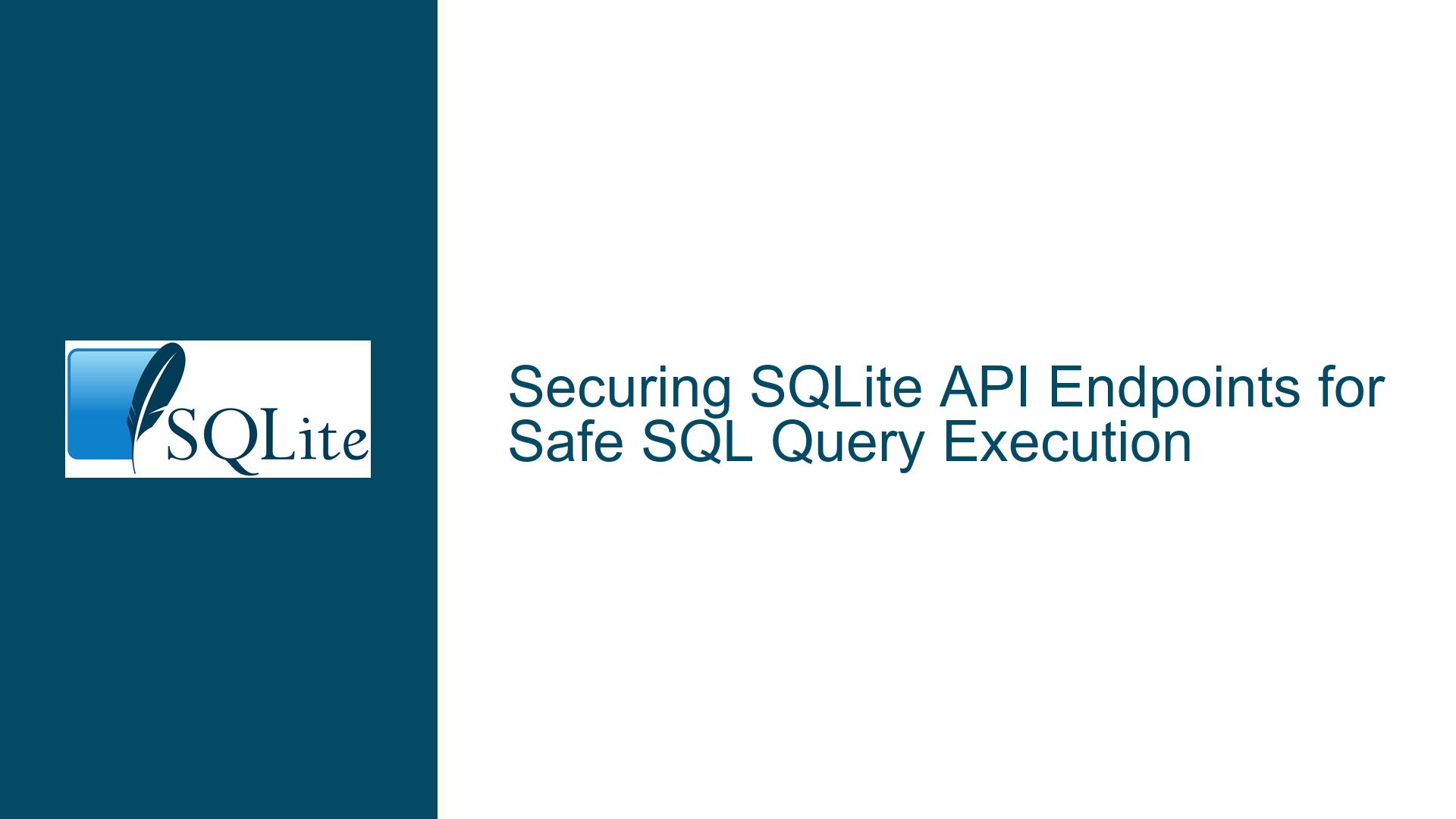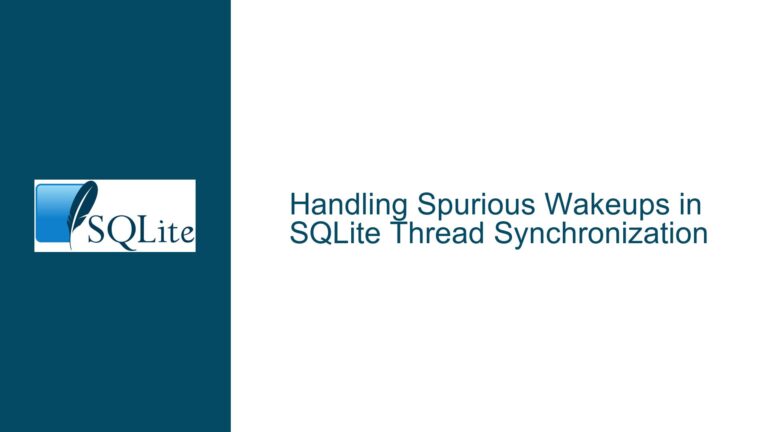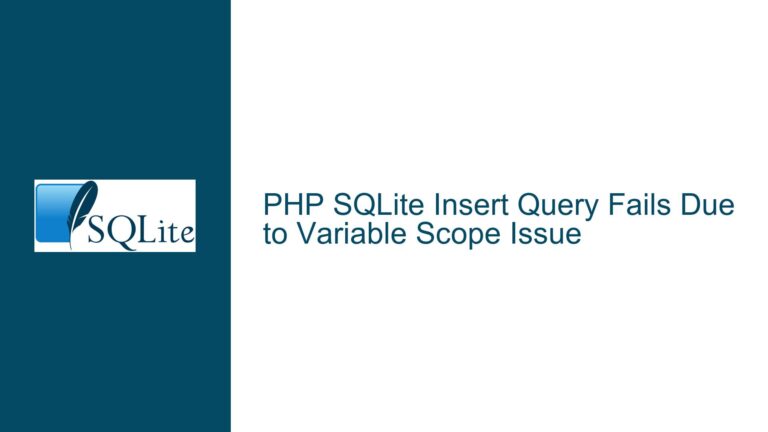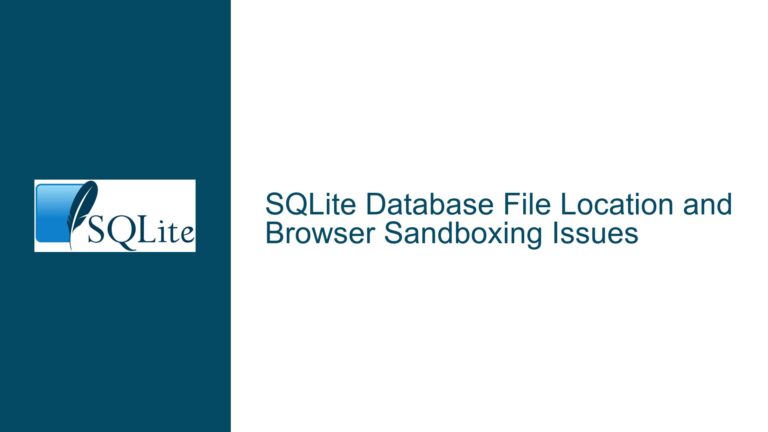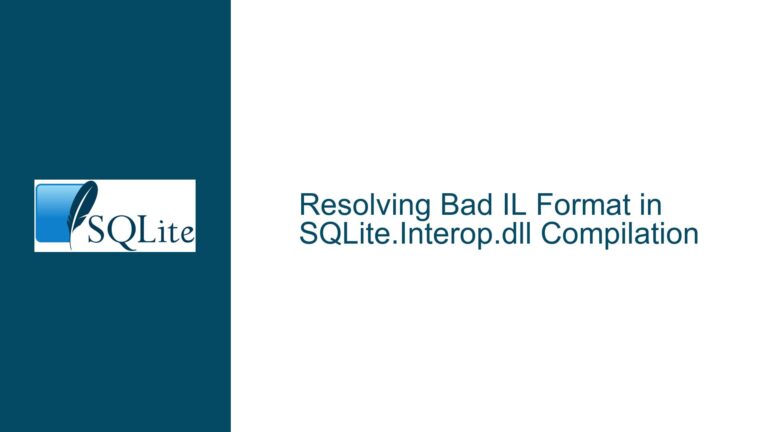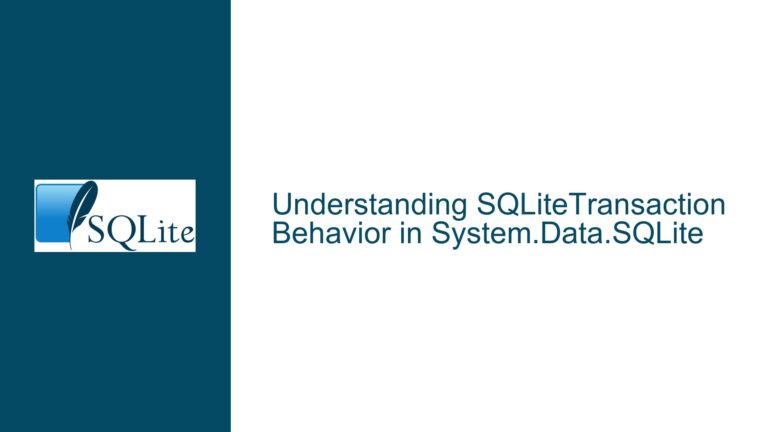Securing SQLite API Endpoints for Safe SQL Query Execution
Understanding the Risks of Exposing SQL Query Endpoints
Exposing an SQL query endpoint to users is a powerful feature that allows for flexible data retrieval, but it comes with significant risks if not implemented carefully. The primary concern is the potential for malicious users to execute harmful SQL commands, such as DROP TABLE, DELETE, or even complex queries that could lead to data leakage or denial of service. The core issue revolves around ensuring that the endpoint is strictly read-only and that users cannot execute any form of destructive or unauthorized queries.
The discussion highlights several key points: the need to restrict queries to SELECT statements, the importance of preventing multiple queries in a single request, and the necessity of safeguarding against long-running or infinite-loop queries. Additionally, there is a focus on leveraging SQLite’s built-in features, such as the Authorizer API and read-only connections, to enforce these restrictions. The challenge lies in balancing security with usability, ensuring that the API remains functional for legitimate users while being robust against malicious actors.
Exploring SQLite’s Authorizer API and Read-Only Connections
One of the primary solutions proposed in the discussion is the use of SQLite’s Authorizer API. This API allows developers to define a callback function that is invoked whenever an SQL statement is prepared or executed. The callback can inspect the operation being performed and decide whether to allow or deny it based on predefined rules. For example, the Authorizer API can be configured to permit only SELECT statements while blocking all other types of queries, such as INSERT, UPDATE, DELETE, or DROP.
However, the discussion also reveals some nuances in using the Authorizer API. For instance, the SQLITE_READ action code must be explicitly allowed to enable SELECT queries, as it is responsible for reading data from tables. Additionally, the API provides detailed information about the database schema being accessed, such as the database name (e.g., "main") and the specific table or column involved in the operation. This granularity allows for fine-grained control over what users can access, making it possible to restrict access to sensitive tables or columns.
Another critical aspect is the use of read-only connections. By opening the SQLite database in read-only mode, developers can ensure that no modifications can be made to the database, regardless of the queries submitted. This is achieved by appending ?mode=ro to the database file URI when establishing the connection. This approach provides a strong layer of protection against accidental or intentional data modifications, as the database engine itself enforces the read-only constraint.
Implementing Robust Security Measures for SQL Query Endpoints
To create a secure SQL query endpoint, developers must implement a multi-layered security strategy that combines SQLite’s built-in features with additional safeguards. Here are the key steps to achieve this:
Restrict Queries to
SELECTStatements: The API should validate that the incoming query starts withSELECTand does not contain any other SQL keywords or commands. This can be done using regular expressions or a simple string check. However, care must be taken to ensure that the query is not a concatenation of multiple statements, as this could bypass the restriction.Use the Authorizer API: Implement an authorizer callback function to enforce query restrictions at the database level. The callback should allow only
SQLITE_READactions and block all other operations. This provides an additional layer of security, as the database itself will reject unauthorized queries.Open the Database in Read-Only Mode: Configure the SQLite connection to open the database in read-only mode using the
?mode=roparameter. This ensures that no modifications can be made to the database, even if a malicious query is submitted.Implement Query Timeouts: Use SQLite’s progress handler or interrupt API to set a timeout for long-running queries. This prevents users from executing queries that could consume excessive resources or cause the API to become unresponsive.
Validate and Sanitize Input: Before executing any query, validate and sanitize the input to ensure it conforms to expected patterns. This includes checking for SQL injection attempts and other malicious payloads.
Use HTTPS and Authentication: Ensure that the API is accessible only over HTTPS to protect against interception and tampering. Additionally, implement authentication mechanisms, such as API keys or tokens, to control access to the endpoint.
Log and Monitor API Activity: Maintain detailed logs of all API requests and responses, including the queries executed and the results returned. Monitor these logs for unusual patterns or potential security incidents.
Limit Access to Sensitive Data: If the database contains sensitive information, use the Authorizer API to restrict access to specific tables or columns. This ensures that users can only query data they are authorized to access.
By following these steps, developers can create a secure and reliable SQL query endpoint that balances flexibility with robust security. The combination of SQLite’s built-in features and additional safeguards provides a comprehensive solution to the challenges of exposing SQL APIs to users.
